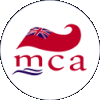A complete Pre-Purchase Condition Survey includes an evaluation of:
- The condition of the hull beneath the waterline and topsides - including testing for moisture content with a Moisture Meter.
- The overall condition of the hull and its internal structure.
- The condition of the keel and keel join.
- The condition of the props, shafts, rudders & stern gear.
- The condition of decks, superstructure and deck fittings.
- The condition and suitability of ground tackle.
- The condition of the mast(s), rigging and sails (motor vessels excepted).
- Condition of the steering equipment, Autopilots & any emergency steering.
- The condition of the electrical installation including the condition and stowage of the batteries.
- The condition of the machinery installations and fuel supply.
- The condition of the sea valves and all through-hull fittings.
- The condition and suitability of bilge pumping systems.
- The condition and suitability of all plumbing & tankage.
- The condition and suitability of all life-saving equipment on-board.
- Tenders & Toys, Accessories, Canvas & Covers and Miscellaneous.
- Sailing & Motoring Sea Trials - weather permitting - of a least an hours duration.
A complete Pre-Purchase Condition Survey requires that the vessel be placed ashore at least four (4) full days before the underwater hull can be inspected. The underwater hull should be initially sprayed off but not re-painted.
If scaffolding is required to reach and touch the whole underwater hull - then it should be set up prior to my arrival. However, a two-tier rolling scaffold is normally sufficient.
The underwater hull survey can take up to 6 hours (depending on the size of the yacht). After this the hull can be re-painted and relaunched the same afternoon, or more usually, the following morning. Anodes must always be replaced.
The Sea Trials can take place as soon after re-launch as is convenient. The remainder of the survey will follow.
The entire survey can take 3 days or more for a yacht of up to 24 metres.
If osmotic bubbles are found in a GRP hull - some may be opened up to test the fluid within and will therefore need re-sealing with underwater epoxy before any anti-fouling paint can be re-applied.
It is of great assistance if loose gear and spare sails are removed. It is not necessary to empty each and every locker - as long as the owners representative is willing, we can empty individual lockers as and where necessary when onboard.
Please ensure that there is a copy of the Builder's Certificate, the Ship's registration papers and a copy of the VAT certificate (if relevant).
Please have the necessary crew standing by to move the boat to & from the slip and later to take the boat out on a sea trial - I simply cannot both skipper the boat and survey it at the same time.





